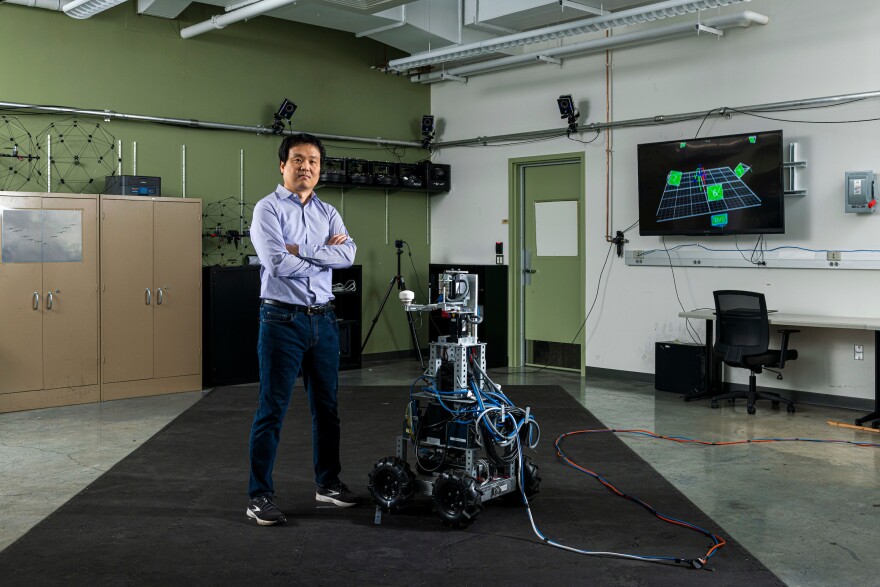A researcher at Missouri University of Science and Technology is working to try to find ways to make robots feel more human.
Yun Seong Song, a professor of mechanical and aerospace engineering, led a team that created a robot that would help direct a person on a short walk, while measuring when the human would stiffen or relax their arm.
The goal is data that show what kinds of robotic movements feel more comforting to people.
“It is much different than what most robots need, which is precision,” Song said. “In these cases, you don’t necessarily want a robot to be precise. You want the robot to feel like humans, in a way, where it better be more gentle, it better be more understanding, it better be more accepting.”
Song said the data is a small step toward creating more empathetic robots, but it does quantify specific movements that can help robot designers better understand a human’s needs in terms of physical touch.
“If you examine how humans handle physical interaction, you realize that there has to be constant processing of information and decision making to infer each other’s intent,” Song said. “Uncovering the mechanism through which this happens will help us design future robots that can seamlessly interact with their human partners.”
Song hopes the research will help accelerate the design of robots that can assist people in medical and caretaking roles.
“Being more human, whatever that means, we're trying to define it at the moment, so that the physical interaction from a robot feels more safe and more intimate, more reliable to human touch.”
Song and his collaborators published their findings in the Nature journal Scientific Reports.
Song said robots that can play a larger and more compassionate roles in our lives are not in the near future, and it will take thousands of small advancements like the one his team made to make it possible someday.
“The long term goal is what I think all of us dream about – to have a real life version of robots like C-3PO from Star Wars or Baymax from Disney’s Big Hero 6,” Song said.
Copyright 2022 St. Louis Public Radio. To see more, visit St. Louis Public Radio.





